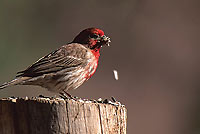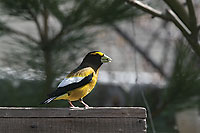In Edwardian fashion, feathered hats were all the rage during the late 19th and early 20th centuries. The price for those hats? Millions of herons, egrets, and other birds were killed by plume hunters for the birds’ feathers. The millinery trade decorated ladies hats with feathers, stuffed birds, flowers, and more. Fashion over nature.
After protests led by two Bostonian socialites - Harriet Hemenway and her cousin, Minna Hall and a newly formed society of women for the protection of birds, the shooting silenced. The two urged their friends to stop wearing feathered hats, and many women flocked to new group – the Massachusetts Audubon Society. 
Around this time on Christmas Day 1900, a flock of birdwatchers took wing and decided to enjoy the Christmas holiday by counting birds instead of shooting them. Organized by Frank Chapman of the fledgling Audubon Society, he called the event the Christmas Bird Census. Little did he and some other 24 founding birders realize what they were starting – the Christmas Bird Count, better known as the CBC.
This year the CBC turns 118 years old. It’s the longest running citizen-science survey in the world and now boasts over 2,300 counts held across North America and other parts of the globe. Here in Canyon Country, the Moab Count occurs on December 16, bookended by three days before and after known as Count Week. Species observed during these days pre- and post-count day are included in the species total for the event.
In Moab, the count averages around 70 species. Total number of birds varies year to year depending upon the size of flocks of American robins, European starlings and Canada geese observed. There are the regulars such as juncos, sparrows, waterfowl, hawks, and eagles, but a few surprises always show up such as roadrunners, Eastern blue jays, Northern pygmy owls, or evening grosbeaks. 
Another appealing aspect of the CBC is that participants don’t need to be regular birders or even have much experience. There is always a need for extra observers or just some companionship to enjoy the day. Teams get assigned to specific areas within the count’s circle, a 15-mile diameter circle centered on Coffee Pot Rock. Habitats in the circle include places such as the Colorado River, Matheson Preserve, residential areas in town and Spanish Valley, and Mill Creek.
Of course, you never know what unexpected birds might show up. Eastern blue jays or brown thrashers. A Northern pygmy owl or flock of evening grosbeaks. The rarities make for exciting finds, but it is the core of regular species that intrigue researchers who analyze population trends out of the years of data. Changes in local populations may be linked to habitat fragmentation or even global climate change, while the unusual species might represent migrants blown off course.
So, besides contributing to science, you’ll also be a part of history. Reaching across the decades, you’ll have the company of Hemenway and Hall, Chapman and even John James Audubon himself. For more information or to participate on the Moab CBC, contact Marcy Hafner at 435-259-6197 or marcymoab@yahoo.com. A potluck breakfast will be held at the Nature Conservancy office, 900 W. Kane Creek Blvd, at 10 a.m. on December 17 to go over species observed and those that got away.


